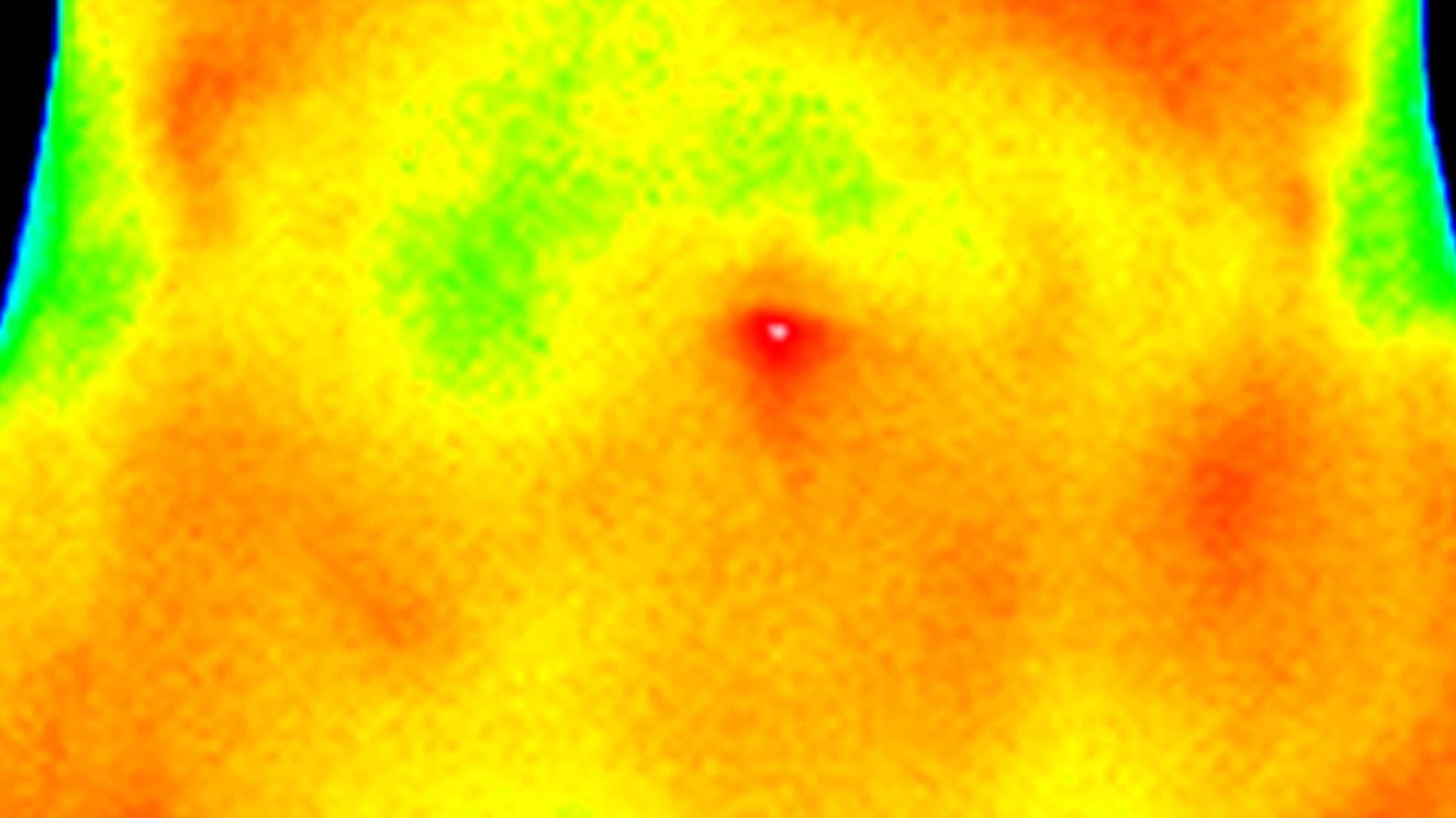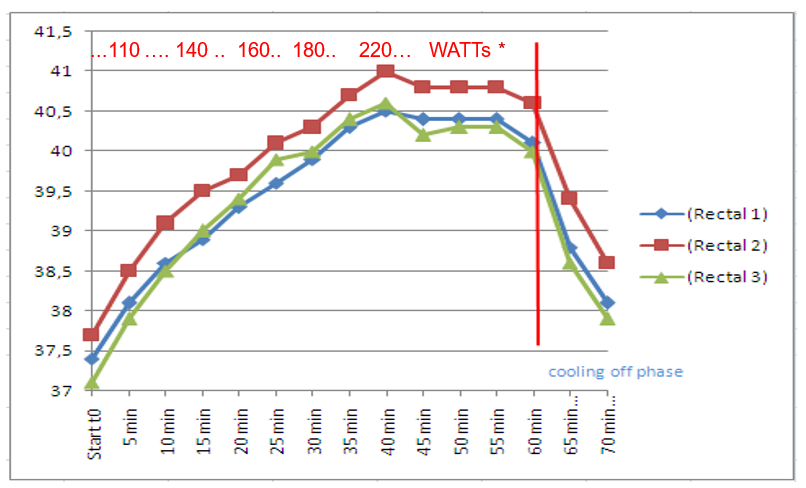
Regional Hyperthermia – Temperatur Example Prostata
Example Prostata
This is a patient with a prostate tumor. The measurement was taken with three sensors that were advanced to the level of the prostate in the rectum. When the sensors are positioned along the intestinal wall, they are very close to the intended target area. The two 250-mm electrodes were cooled down to 8 degrees Celsius. This leaves a cool sensation on the skin, but allows for applying a higher output in a way that is easily tolerated. The treatment lasted 60 minutes with a total power output of 543 kilojoules (kJ).

The measured temperature profile is quite similar for all three sensor readings. There was a continuous increase to 41 degrees Celsius, and a plateau above 40 degrees Celsius was maintained for approximately 30 minutes.
Conclusion: It is feasible to achieve temperatures in the high fever range in deep-seated body locations. This depends significantly on the utilized technology and its handling. The application of outputs above 500 kJ with the Celsius42 device is a challenging treatment that demands a lot from the clinical staff and the patient. Temperature targets around 39°C have their rationale as well and are fully justified. Temperature targets in the moderate range may even be more favorable, especially to support immunological therapy goals. High temperatures ranging from 40 to 42 degrees Celsius should be pursued, for example, to intensify the effect of radiation therapy after its application.
Limitations will occur in patients with significant layers of fat above the actual target area. The heavier the patient, the more difficult it is to achieve a sufficient temperature gradient through the fat layers, which absorb much of the externally applied energy.
